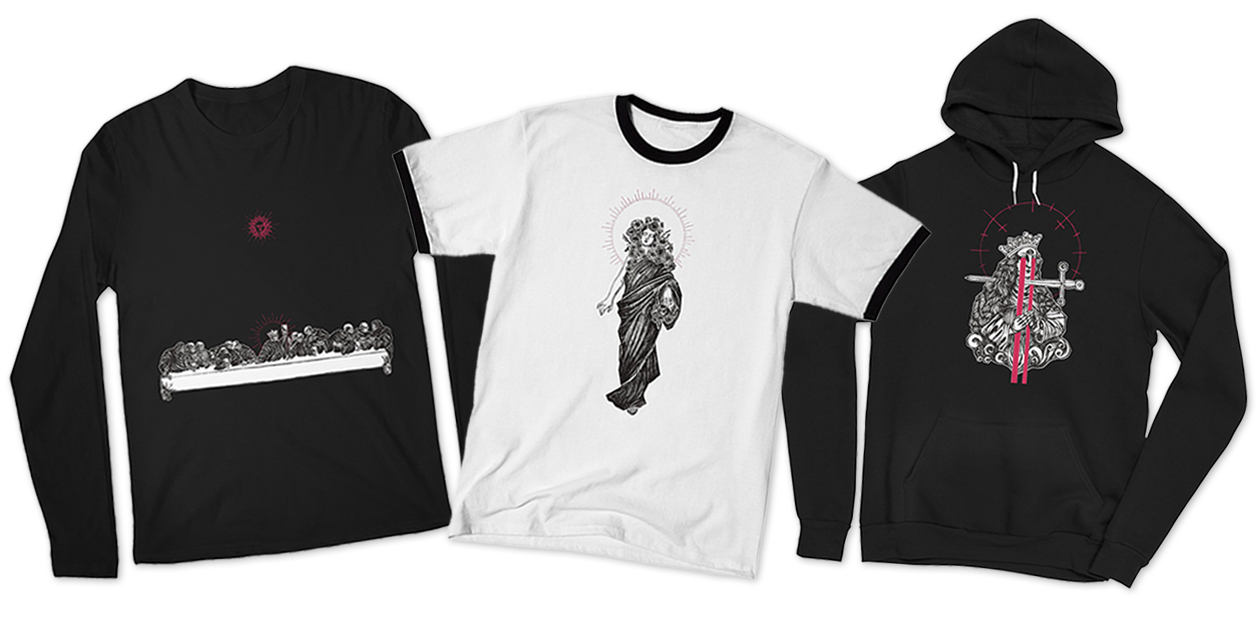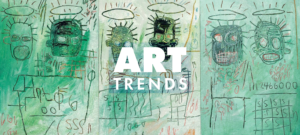For our next installment of Art Trends, we’re taking it back to the 15th century. Yes, thus far I’ve mostly referenced contemporary art, but now it’s time to switch things up! In the art market, trends don’t always involve contemporary work. Sometimes old documents resurface or new studies emerge on the “masters,” which result in their paintings selling for high prices at auctions. An art canonical “master”can also trend in the market when paintings previously stowed away in private collections go up for auction and collectors engage in a fierce competition to get their hands on them. This is exactly why Renaissance artist Sandro Botticelli is trending.
Most people know Botticelli if not by name, then by his art. His most widely known work is The Birth of Venus, which we’ve seen referenced, parodied, and redone probably as much as Leonardo da Vinci’s Mona Lisa. This year, a private collector put one of Botticelli’s lesser-known works, Portrait of a Young Man Holding a Roundel, up for auction at Sotheby’s New York. It became the auction house’s highest-selling masters’ painting ever, closing out at $92.2 million U.S. dollars. How could a simplistic portrait like this one break auction records? Let’s find out!

A Quick Overview of The Renaissance
Here’s a refresher about the movement before we dive into the art. The Renaissance period existed from the 14th to 17th century. Many art historians consider the height of the period to be the 15th century, thanks to artists such as Leonardo da Vinci, Michelangelo, Titian, and, of course, Sandro Botticelli. With the emergence of humanism, Renaissance art completely shifted. Humanists believed that people were at the center of the universe, and thus were able to dictate their own relationship to God and the world instead of the church.
The Humanists had a renewed interest in the classical, which likely fueled their desire to support the arts. Here, classical refers to Greco-Roman scholarship, art, and values—in other words, artists had a newfound interest in antiquity. Humanists were interested in mythology, literature, philosophy, and geometry, and focused on aesthetic beauty. Artists’ newfound interest in the humanities resulted in the development of linear perspective, as well as new modes of representation such as frontal portraiture, self portraiture, and landscapes.
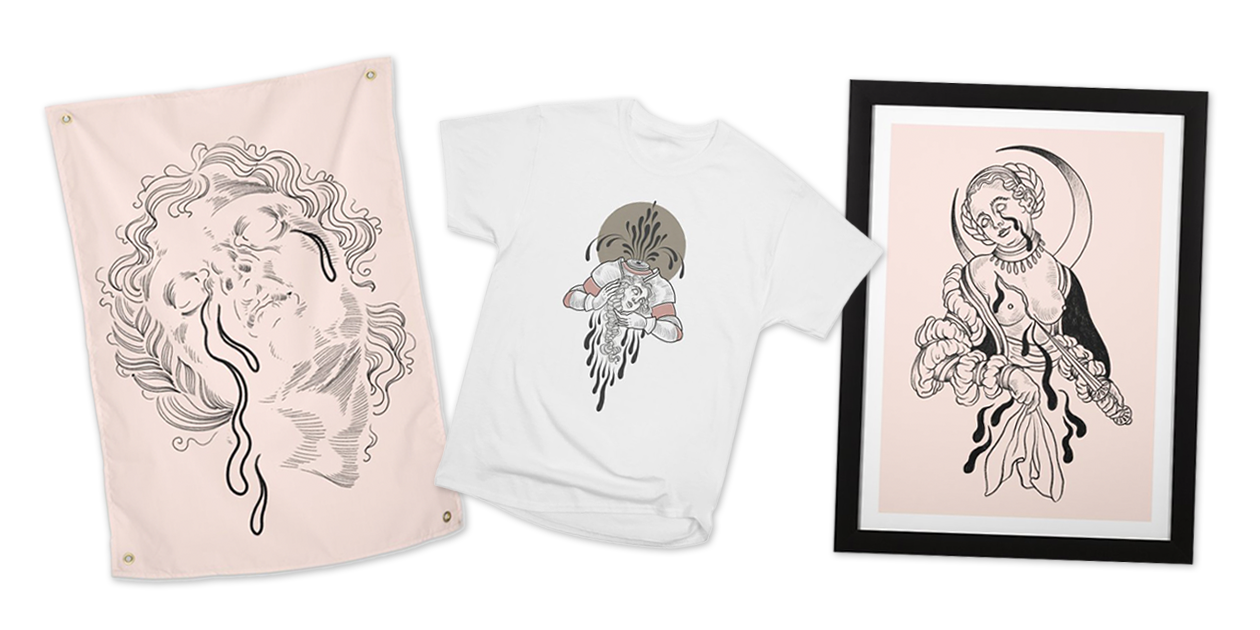
Portrait of a Young Man Holding a Roundel
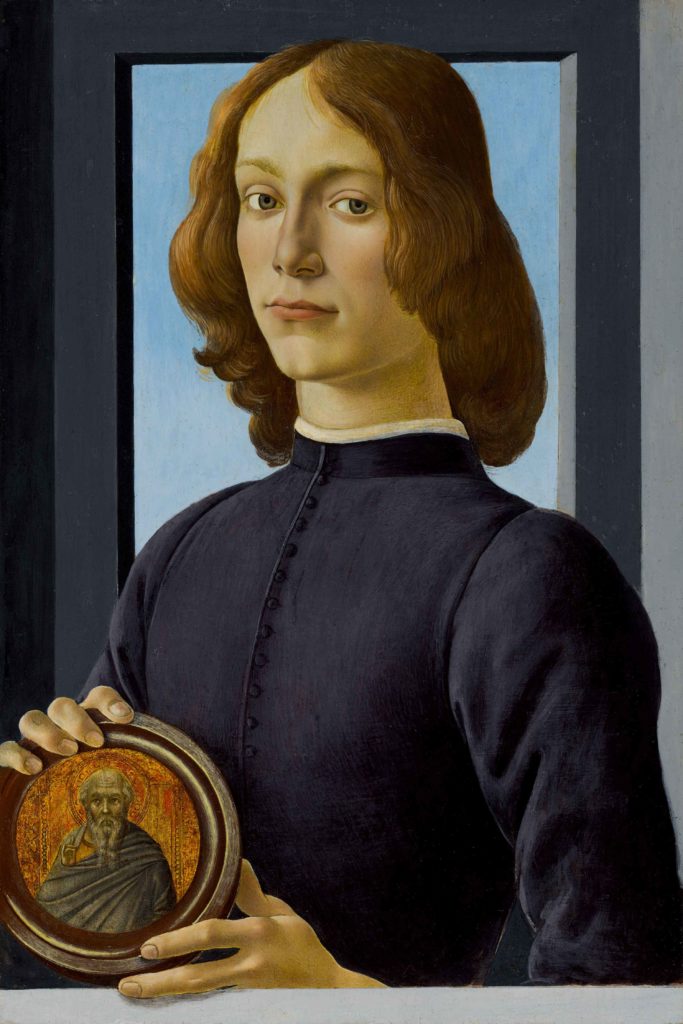
I have to say that, at first, I was appalled that this painting sold so high. This is not the most interesting Botticelli painting I’ve ever seen, and is certainly the least breathtaking. That is not to say that I don’t find it beautiful—I love Botticelli—but this is a far cry from Primavera (1482) and The Birth of Venus (1486). It is completely outside of the realm of the Sant’Ambrogio Altarpiece (1467–1470). Then, I took a closer look and changed my mind. The draw of the modernly simplistic Portrait of a Young Man Holding a Roundel (1480) is certainly its mysteriousness.
What the Painting’s Subtleties Reveal
In this portrait, a young man stands holding what looks like a small framed painting. The man gazes with his head slightly turned, eyes directed at the viewer. His facial expression is calm, and there’s a hint of a smile in the corner of his mouth. Not a smirk, just subtle. You get a sense of the subject’s interior self through the exterior. Previously, portraiture only accentuated the figure’s exterior, but here, we get more of the young man’s humanity rather than a stiff, stoic figure. The man still embodies a Renaissance ideal, as his clothes and appearance reflect both the subject’s class and the period’s beauty standards—European, of course.
The illusion of an open window frame is in the background, the soft blue representing the sky. We see that the young man is in a room, but the way his fingers lie on the ledge leads us to believe that we’re looking in on him. The first mystery of the painting is who this young man is. There are many theories, one of which being that he is a member of the Medici family, a wealthy family in Europe that commissioned artwork by many of the artists now known as masters. All that experts know for sure is that he is wealthy, handsome, and stylish by 15th century European standards.
The Mysterious Roundel
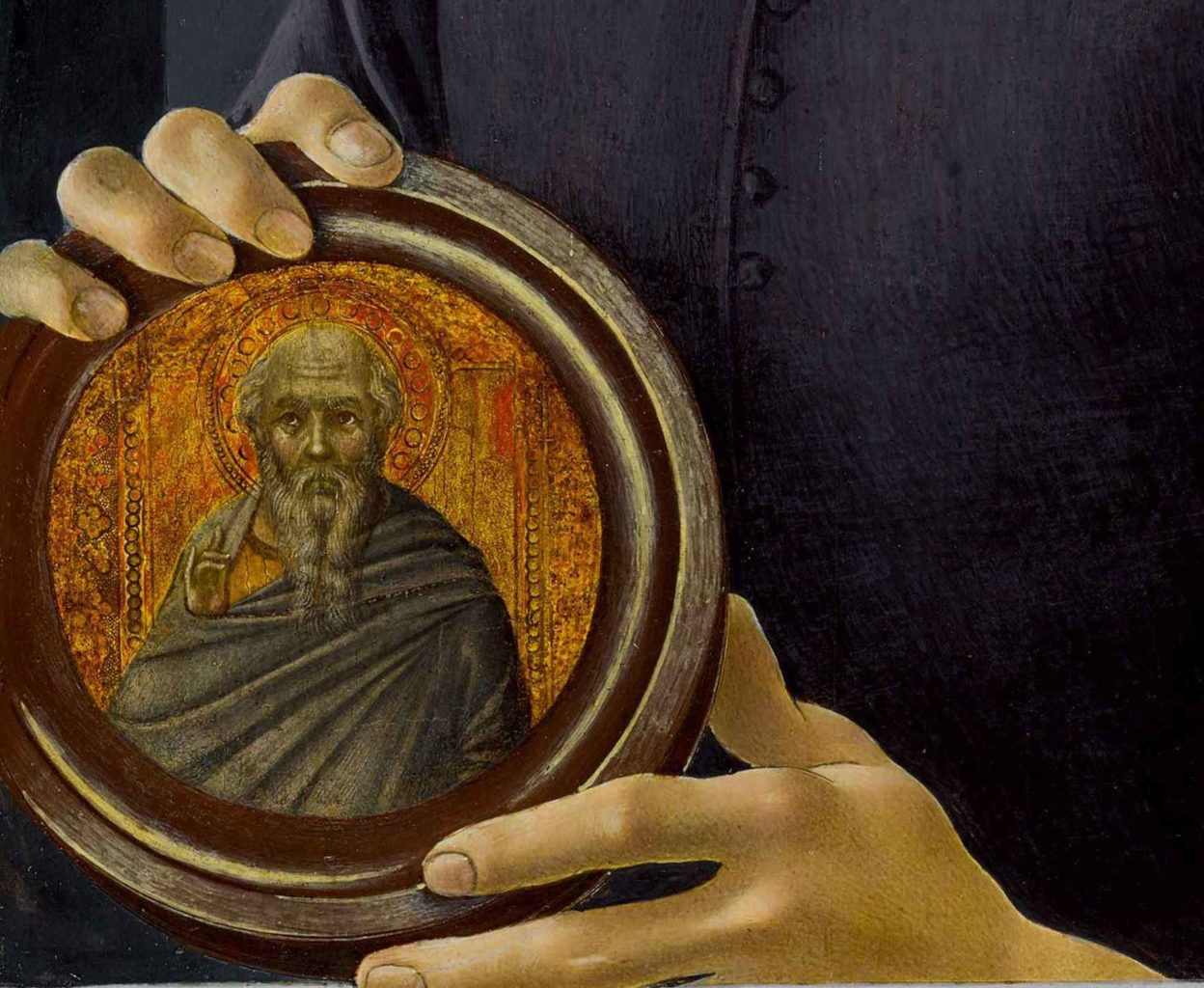
Now, the mystery of the roundel. A roundel—as the dictionary defines it, because I had no idea what it was until I started my research—is a decorative medallion, sometimes used as a symbol. Upon closer inspection, the man depicted in the roundel is a saint. You can tell this by his halo and hand gesture, which are common indicators in Renaissance art. Who is this saint? What does he have to do with this young man?
A theory that I found in my research is that the image of the saint is meant to contrast with the youthful subject. We see the old weary saint small and painted in dull colors next to the vibrant image of the young man with flawless skin. This is certainly a possibility, but I think there’s something else here.
The mystery had me hooked. I had to find out which saint is depicted in the roundel, and if he has any significance to the image beyond the juxtaposition of old age and vibrant youth. So I looked into artistic depictions of saints and tried to narrow down who this might be. After falling down a deep Google rabbit hole with an intensity that mirrored Charlie Day in the mailroom in that one episode of It’s Always Sunny in Philadelphia, I may have finally cracked the code.
But Really…Saint Who?!

Based on his robe, hand position, and facial hair, this saint could be St. Anthony the Great. (It’s important for me to be very specific because he’s not the only St. Anthony.) Now, in my research, I found out St. Anthony the Great is the patron saint of skin diseases. Weird right? However, upon further searching, I found that St. Anthony the Great was known for his great wisdom. He grew up wealthy but disposed of his wealth to help others. With this information, I thought, “Oh, this could be a comparison instead of juxtaposition.”
Commissioned portraits of the time commonly represented the morality and virtue of the wealthy or royal person depicted. The purpose was to make the subject look good not only aesthetically, but also spiritually. The comparison to St. Anthony the Great could be a reflection of how the saint disposed of his wealth. The young wealthy man may have similarly given away his money to support the arts. Botticelli could be presenting his subject as being equally saintly.
Why Did Botticelli’s Painting Sell for So Much?
The answer seems simple. Paintings by the masters usually sell for thousands, if not millions, at auction. Botticelli is at the top of the list of artists with coveted work, right alongside Leonardo da Vinci. Portrait of a Young Man Holding a Roundel at first seems simple, nothing too exciting. Yet, its symbols and mysteriousness make it infinitely more intriguing. I find the symbolic complexity of Botticelli’s work fascinating.
At the time, people would have easily been able to interpret the symbols throughout his paintings. However, as meanings shift over time, we’re left to theorize and find our own meaning in the painting. Now, I understand that the complexity of Botticelli’s work resulted in the record-breaking price of this painting in a time of financial instability, especially with regard to art institutions. To the buyers, though, it’s worth it.
